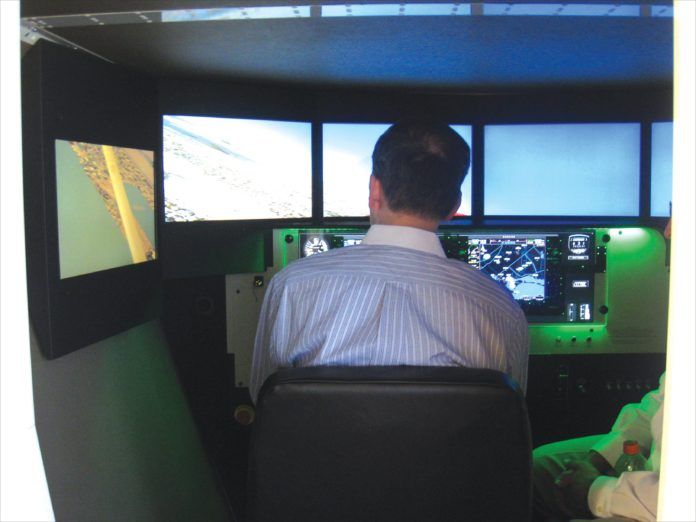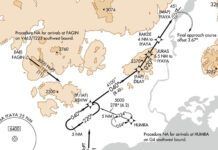You’re 30 miles out from a night LPV (GPS) approach to Runway 36, with a DA of 250 feet AGL. Winds are 180 at five on the surface with 200 variable 600 ceiling and two miles visibility. Your alternate is an ILS 35 minutes of flying away with 1000 overcast and 10 miles visibility. You’ve got 1:20 of fuel.
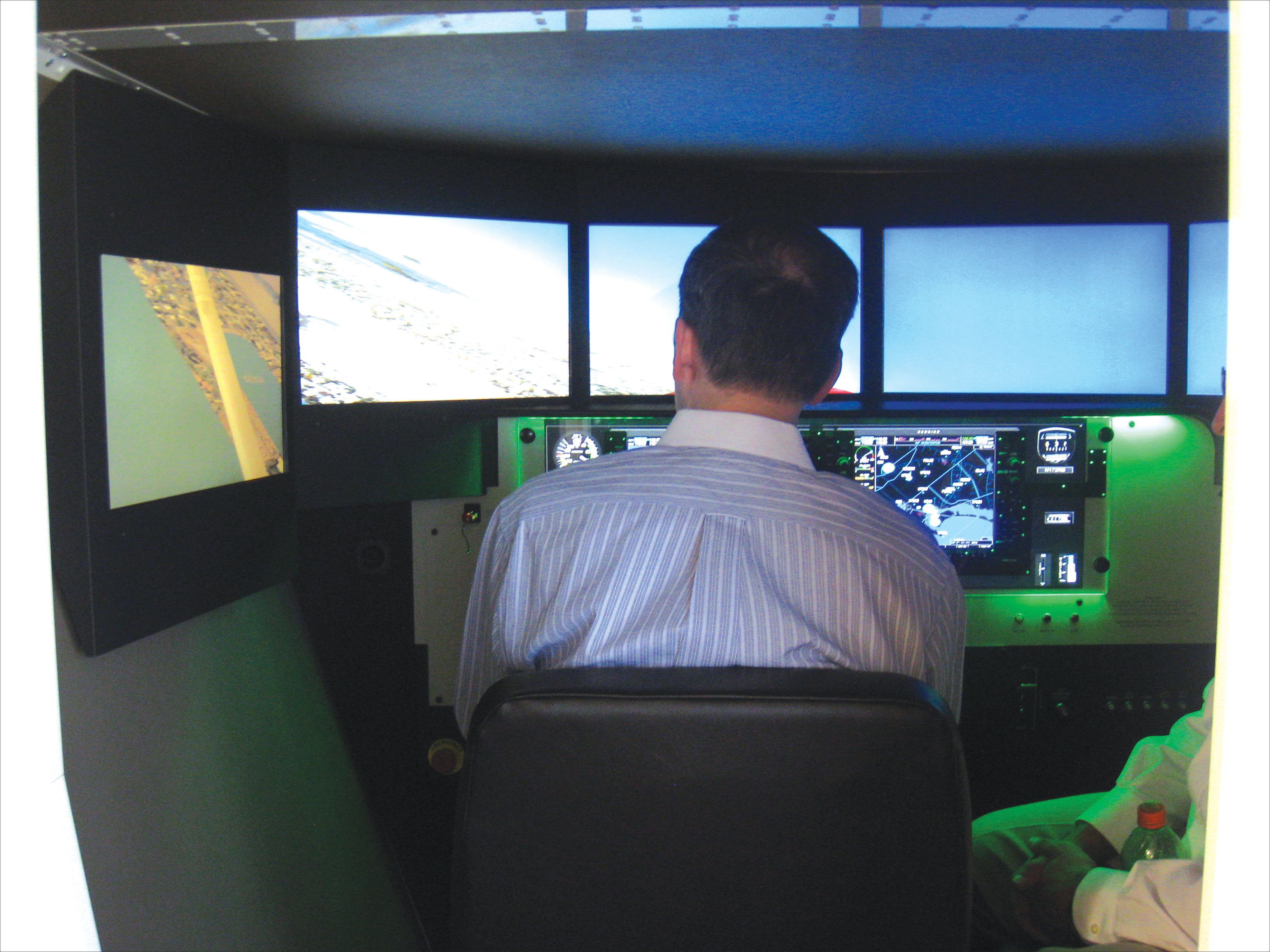
What’s your plan? How can you stack the deck in your favor? Will you try again if you miss? Assume your car awaits you at this field—and having your spouse pick you up past midnight awaits you at the alternate.
No, really. Put down the magazine and think about it for a moment. I’ll wait.
Thanks for Simming
Did you enjoy your simulation training? Because that’s what you just did, and how much value you got out of it was directly proportional to how much effort you put in. No, you can’t log it.
This is the point so often missed about simulator training: The real value of sim time is exercising neural pathways. That includes physical motor pathways, such as pushing buttons, and moving levers. It includes the practiced eye motions to maintain an instrument scan with part of your brain and briefing an approach with the other. And it includes puzzling through situations, like the night approach above. As you might expect, they all are as valuable as the effort you put in.
This is why “Can I log this time?” is such an irksome question. Worrying about logging time means you’re more concerned with checking boxes than proficiency. It’s like flicking your fingers under the faucet before you leave a public toilet to make it look like you washed your hands. There’s a better way.
IFR Cross-Training
If the core function of simulation for training is fighting neural atrophy, then your first focus should be getting the right balance of neural exercise. You could slice that a couple ways, but a simple way could be: 1) physical cockpit skills (scan, stick-and-rudder, buttonology), 2) procedural IFR (ATC communications and matching the magenta lines on the screen to the black ones on the chart), and 3) problem-solving. If you create situations that work these skills while not actually traveling by air, it’s productive sim time.
Under this scheme, you get credit for reading IFR, so long as you do more than just chuckle at the back page. You also get simulation training credit for practicing in the real airplane. “Huh?” You say. “Practicing in the real airplane isn’t simulation. It’s flying.”
But flying for practice shouldn’t be “real.” When you fly somewhere for real, your goal is to get there as safely and expeditiously as possible, with minimized challenges. When you fly for practice, your goal is a neural workout. You want to turn up the treadmill and make yourself work.
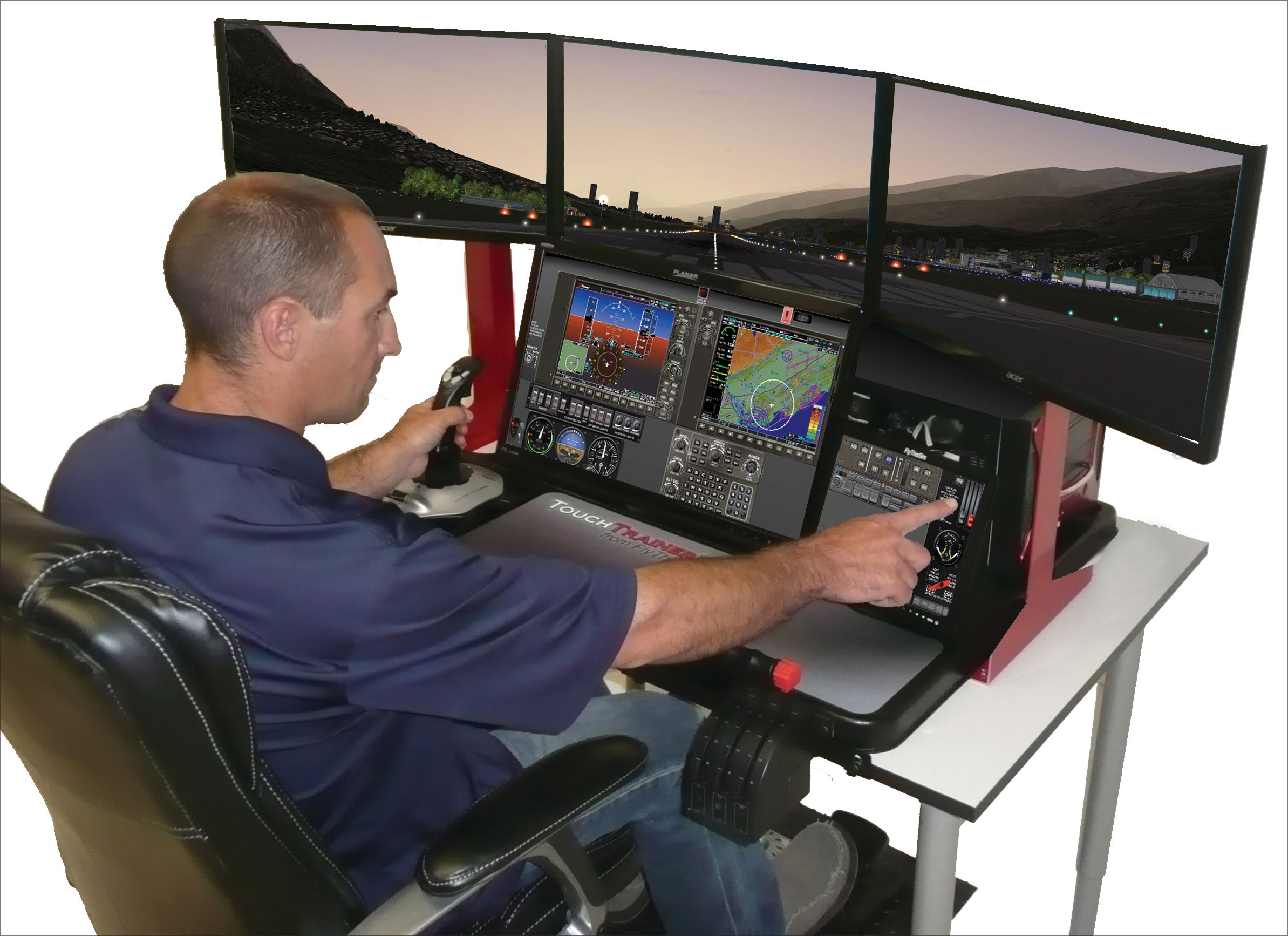
This is why logging approaches is the wrong focus for practice. Your goals should be something like: “Today I’ll get some straight-and-level hand-flying while simultaneously briefing an unfamiliar approach, suspending waypoint sequencing to hold at the IF as published, an unpublished missed assigned by ATC, talking with ATC, and a circle-to-land.” Then you select the best available tool to accomplish that.
Carefully selecting which tools you use and when you use them will maximize your training value while also maintaining legal currency.
IFR Gym Equipment
If you’re going to pick the right tool, you need to know what those tools are. Here’s a quick rundown, mapped against their strengths, their weakness, and their status in the eyes of the FAA.
Actual Aircraft: Nothing beats the real thing, and you can even actually go somewhere. The downsides are cost and the limited range of situations that can be safely experienced—practicing things like engine failures and iced-up approaches can get quite expensive while yielding uncertain results.
True Simulators: Under the official FAA definitions few GA pilots have access to these, as they cost more than a Super Bowl ad placement. Most have 3-D motion and visuals good enough to log day-VFR. They have cockpits faithful to specific aircraft. On the plus side, most true simulator time counts like a real aircraft, including landings. Editor Bowlin actually earned his ATP in one.
Training Devices: These fall into two broad categories with multiple sub-categories fracturing into a regulatory morass only a true bureaucrat could call home. Most GA flight school “simulators” are training devices. For our purpose of proficiency, the more capable of these devices have realistic cockpits, real (or well emulated) avionics, and even motion for a fuller experience. Less capable ones may just sit on a desktop, but still have full controls and functional avionics. They are great for exercising physical and procedural skills. Given a good scenario, they can be great for problem-solving.
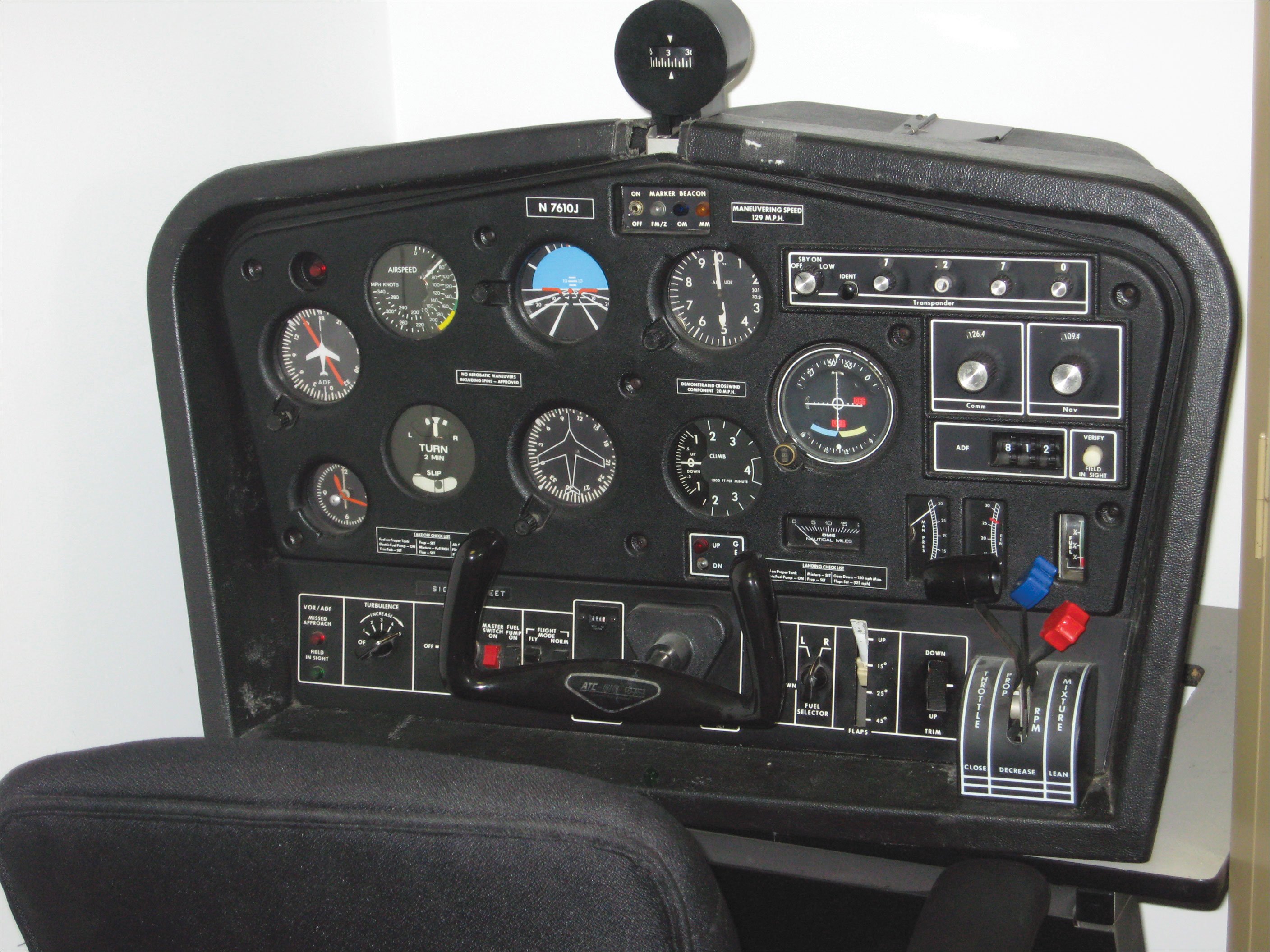
For the purpose of currency, almost all of them allow logging approaches, tracking and holds, but not landings—those need an airplane or a true simulator. This means that unless there’s a specific (uncommon) waiver in place, you can’t quite complete an IPC in one.
Personal Simulators: The range here is from devices that could become FAA-blessed Training Devices (if the manufacturer kissed the FAA’s, um, requirements), to your six-year-old PC running Microsoft Flight Simulator. Nothing you do here is loggable, and the lack of cockpit fidelity means they are weak on physical skill practice. But if taken seriously, they can be great for procedural skills and problem-solving. Tools like the interactive scenarios for the AOPA Jay (full-disclosure: I help make these) or the live ATC service of PilotEdge can add significant training value.
On-Screen Simulations: This is the step between a magazine article and a device with flight controls. For example, PilotWorkshop’s IFR Mastery program takes you through a realistic IFR scenario each month where you must analyze a situation and select the best course of action. AOPA Air Safety Foundation courses or online seminars are other examples.
Just Think About It: You can get a real neural workout from just playing out scenarios in your head. Call it the “magazine plus toilet seat” simulation platform, or “armchair flying.” It strengthens problem-solving and, to a lesser degree, procedures. It should be part of your total training regimen.
A Workout Program to Live By
Ultimately, we want something that builds proficiency in our three key areas, and hopefully offers legal currency as a byproduct. One way to do this is mapping training tasks over a year to a monthly, multi-hour training session like Frank Robinson’s “Proficiency in Pieces” (July 2007 and April 2012 IFR).
But that requires a lot of discipline. Here’s another cascading system that hits all three areas for IFR proficiency, and is mapped out across different simulations. Choose what combination works for you.
The only requirement is, like exercise or eating better, you must make it a habit.
Every week: Read an article or walk through an on-screen simulation. It might take an hour, or just 15 minutes. But give it your full attention and then move on. Put it on your to-do list each week and enjoy checking it off. If you have access to a personal simulator, one approach or interactive scenario counts as that week’s exercise.
Every month: Fly three approaches, two unusual attitude recoveries and one hold on a training device or better. It’ll be up to you to make it as much of a workout as possible, so increase the value by employing the cruelty of friends and have someone set it up. Get even by trading roles. Monthly activity can count as the weekly activity if you want.
Every season or so: Step up your monthly practice a notch by conducting it in a sit-down training device or better. Make it either a real IPC or at least hit all the points of a good IPC.
Every year: Take a day to fly somewhere for fun with at least one other pilot. No training agenda. No schedule. Just fly somewhere to go fishing. Or to a car show. Or a curling tournament.
Habits stick when they’re easy and rewarding. Reading an article becomes automatic if you keep the magazine where you’ll have a few minutes that need filling. Doing a PilotWorkshops seminar is easy if you have a habit of sitting in front of your computer with the day’s first cup of coffee. Going down to the flight school to use the simulator is easier if planned for the same day each month with another person committed to join you.
This scheme sounds more complicated than it is. All you’re doing is getting into a weekly habit of thinking through flying scenarios and a monthly habit of actually going through the motions. But in both cases you’re making it challenging enough to get a workout. Because you want to make sure 61.57 currency gets covered, make sure the combination you choose takes care of currency along the way. Then, you needn’t be concerned about currency again, because you’re actually maintaining proficiency—something no regulation can fully accomplish.
Simulation Attitude Flying
Simulation isn’t about the device; it’s about your attitude. It’s about exercising neurons in whatever way you choose to practice. That in itself can be a motivator.
I know many airline pilots. Some dread getting worked over in the sim. Others look forward to it. Ironically, neither group worries much about failing the test. It’s just that some look at a scenario of a failing aircraft on a difficult approach as a chore that must be endured.
The others look at that as an opportunity to prove how good a pilot they really are, while improving their skills.
Jeff Van West, Director of Media for Redbird Flight Simulations, usually washes his hands for at least a full minute after using a public restroom.
The question always comes up: What’s the difference between a Level B and a Level D sim? What about PC-ATDs? What category is that old ATC-50 gathering dust at the flight school?
The best answer is: You don’t care. What matters is the training value each offers.
The longer answer is that Level A-D (what I call “true sims”) are differentiated across 90 pages of a 300+ page document, plus half a dozen Advisory Circulars. For example, all four must have, “Visibility and RVR measured in terms of distance. Visibility/RVR checked at 2,000 ft (600 m) above the airport and at two heights below 2000 ft with at least 500 ft of separation between the measurements.” But only C and D must show, “Patchy fog giving the effect of variable RVR,” and only D must show, “The simulation of runway contaminants must be correlated with the displayed runway surface and lighting where applicable.”
See where this is going? Oh, and helicopters get their own tome and their own levels B-D. So, what you can do is spelled out in the letter of authorization for the physical simulator you’re flying. Ask the school. If you like wading through minutia, you can visit the National Simulator Program and get the actual docs (http://www.faa.gov/about/initiatives/nsp/).
Training devices are similarly broken up into Flight Training Devices (FTDs) levels 4-6 (4-7 for helos) and Aviation Training Devices (ATDs) that are either Basic or Advanced. Airplane FTDs get about 50 pages of stats to define them.
Currency logging differs little on the training devices, but logging for ratings does. The authority on how much of what can be logged on a device comes from the device’s FAA authorization letter. ATDs can use a generic letter in some cases. FTDs all get a specific approval letter that must be renewed.
What happened to FTD Levels 1-3, not to mention PC-ATDs? The FAA changed its mind trying completely unsuccessfully to keep up with changing technology. Once-approved items are grandfathered in, however, so a PC-ATD that was blessed by the FAA back in the day can still be used for 10 hours towards an instrument rating—just as a more advanced B-ATD that has all the real switches, avionics and visuals or that vintage ATC-50 that resembles a Heathkit project advertised in a 1963 Popular Science.
Go figure.
And, as I write this, FAA legal is threatening to change it again, sunsetting all authorization letters on GA sims, requiring new ones. This would hit all the grandfathered-in systems and ATDs hardest. So even this sidebar is “subject to change.” —JVW
There is an increasing number of tools to expand the simulation experience for GA pilots. I mentioned three in the article.
AOPA Jay by Redbird This tabletop personal simulator is a complete home system. The unique bit is that Redbird publishes a new scenario each month to provide an interactive training experience. These are like choose-your-own-adventure stories where what you do on the sim affects the outcome. Don’t like how it turned out the first time? Try again and make different decisions. The scenario will respond accordingly. (www.aopa.org/Products-and-Services/About-the-Jay)
PilotEdge This one takes some set up, but once working it gives you live ATC via the internet for your personal simulator. Now you can call and get an IFR clearance from a real person. Read it back wrong and you’ll be corrected. Need vectors to the ILS to try something again? Just ask. It’s amazing how much you step up your game when you realize there’s a real person watching you, even though it’s a simulated world. (www.pilotedge.com)
IFR Mastery These are available by subscription from PilotWorkshops. Each month a situation is presented and you must puzzle though the best action. All the supporting documents and information is provided, and there’s an expert debriefing and discussion board for each one. PilotWorkshops also offers free weekly training tips and other products. (www.pilotworkshops.com)
These products crossover, too. PilotEdge is available at some schools on full-motion sims. PilotWorkshops and Redbird have teamed up on some scenarios for the Jay and are looking at ways to include PilotEdge as well. —JVW

